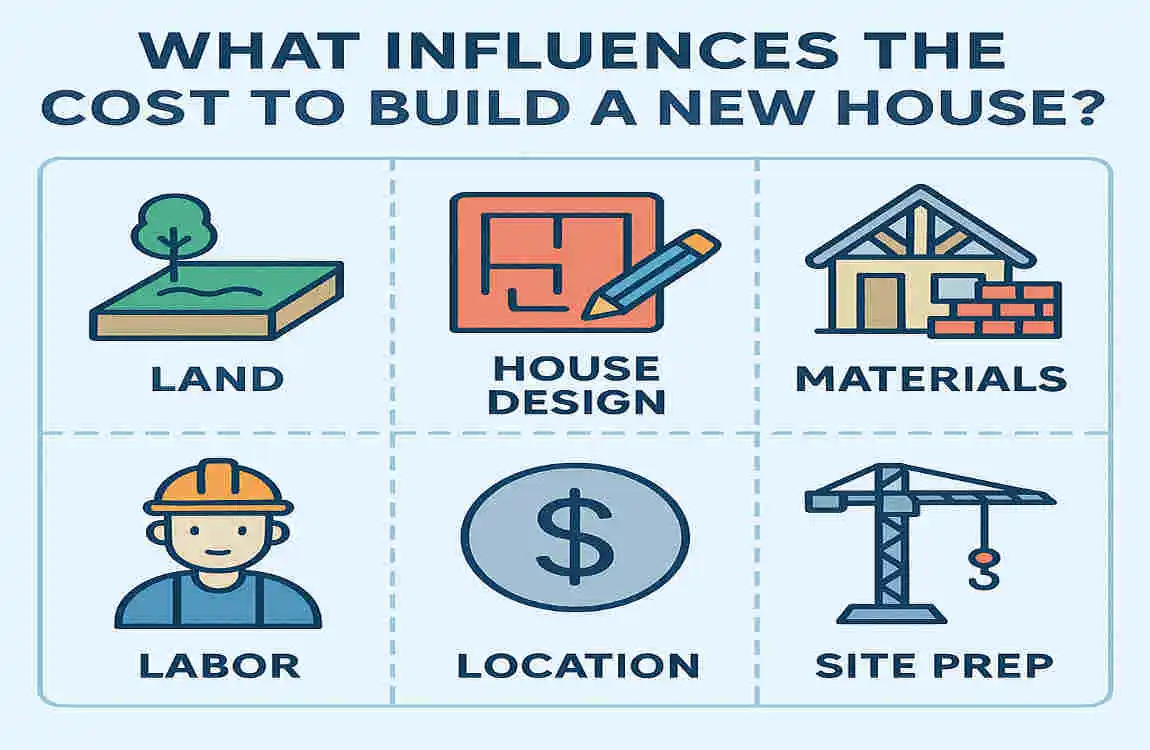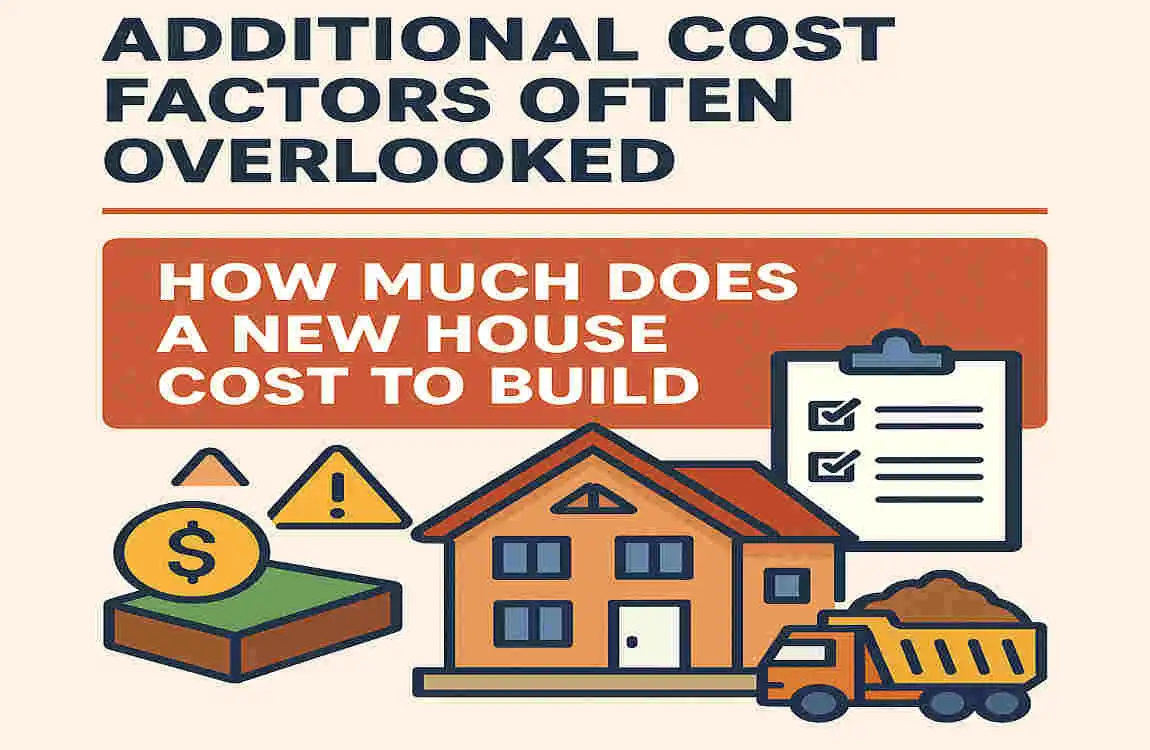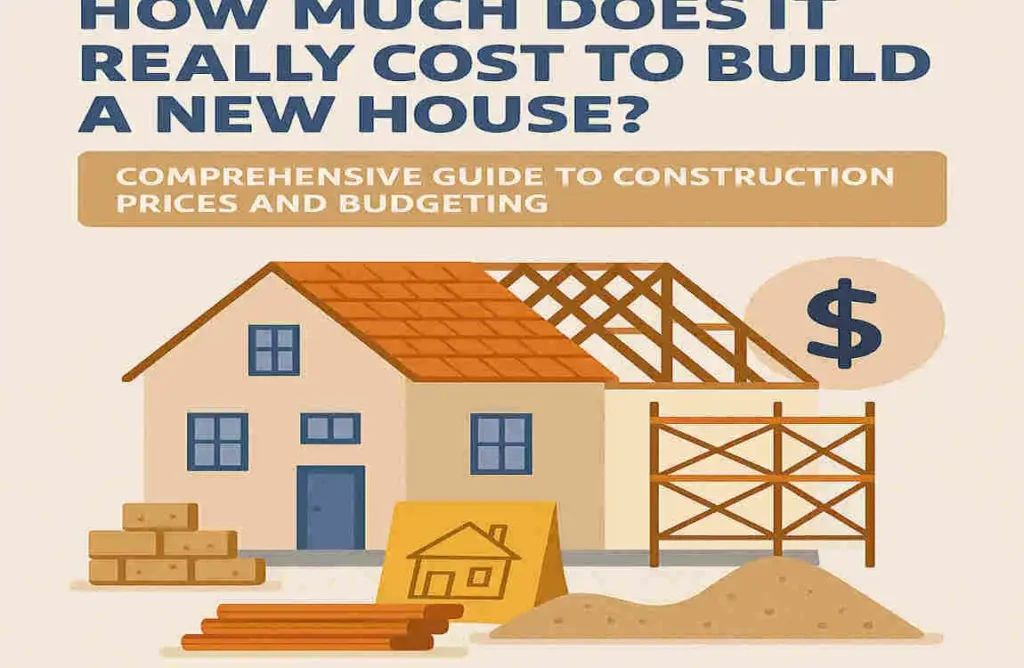Building a new house is a dream for many. However, when it comes to planning, one of the first questions that comes to mind is: “How much does a new house cost to build?” The answer to this question can vary greatly depending on numerous factors, such as location, materials, and labor costs. In 2025, the average cost to build a new home in the U.S. ranges from $200,000 to $500,000, but this figure can increase significantly depending on your preferences and circumstances.
Understanding the Basics: What Influences the Cost to Build a New House?

Before diving into the specifics, it’s essential to understand the factors that impact the overall cost of building a home. Here are the major contributors:
Land Costs vs Construction Costs
The first expense in building a house is acquiring the land. Land costs vary widely depending on the location, size, and desirability of the plot. For example, a plot in a suburban area may cost less than one in a bustling urban center. Construction costs, on the other hand, include the actual construction process and materials, which often account for the majority of the budget.
Size of the House and Cost Per Square Foot
The size of your home directly impacts the cost. In 2025, the average price per square foot to build a house in the United States ranges from $100 to $400, depending on the quality of materials and location. A larger home will naturally cost more to build due to increased material and labor requirements.
Location and Regional Cost Differences
Building costs vary significantly by region. For instance, areas with higher living costs, such as California and New York, tend to have higher construction costs. On the other hand, states like Texas or Alabama may have more affordable labor and materials.
Quality of Materials and Finishes
The choice of materials—whether standard-grade, mid-grade, or luxury-grade—is another critical factor. High-end finishes and custom designs can quickly escalate costs, while opting for more economical materials can help keep expenses in check.
Labor Costs and Availability
Labor costs make up a significant portion of construction expenses. The availability of skilled workers in your area can influence pricing, with labor shortages often leading to higher costs.
Breaking Down Construction Costs by Stage
To plan effectively, it’s helpful to understand how the total cost of building a house is divided across different stages of construction. Below, we’ve broken down the process into key stages and approximate costs.
Site Preparation and Excavation
Before construction begins, your plot needs to be prepared. This involves clearing the land, leveling it, and possibly excavating. These steps can cost anywhere from $5,000 to $20,000, depending on the size and complexity of the land.
Foundation and Framing
The foundation is the base of your home, and framing is the process of building the skeleton. Foundation costs typically range from $10,000 to $30,000, while framing costs can range from $20,000 to $50,000, depending on the size of the house.
Roofing and Exterior Finishing
Roofing and exterior elements like siding, windows, and doors are critical for protecting the structure. These costs typically range from $15,000 to $40,000, depending on the materials used.
Interior Work: Plumbing, Electrical, Insulation, and Drywall
The interior phase includes installing plumbing and electrical systems, insulating the home, and adding drywall. Combined, these tasks can cost between $30,000 and $70,000.
Flooring, Cabinetry, and Interior Finishing
Finishing touches, such as flooring, cabinets, countertops, and paint, are crucial for making the house livable. These costs can range from $25,000 to $60,000, depending on the quality of materials.
Landscaping and Outdoor Amenities
Finally, landscaping, driveways, and outdoor features like patios or pools add the finishing touches to your home. Depending on your preferences, these elements can cost anywhere from $5,000 to $50,000.
Construction Stage Cost Range
Site Preparation & Excavation $5,000 – $20,000
Foundation & Framing $30,000 – $80,000
Roofing & Exterior Finishing $15,000 – $40,000
Plumbing, Electrical, Insulation $30,000 – $70,000
Flooring & Interior Finishing $25,000 – $60,000
Landscaping & Outdoor Amenities $5,000 – $50,000
Regional Cost Differences and How They Affect Your Budget
Regional Variations in Cost Per Square Foot
As mentioned earlier, costs vary based on location. Below is an example of typical cost ranges per house square foot in different U.S. regions:
- Northeast: $150 – $400
- Midwest: $100 – $250
- South: $90 – $200
- West: $120 – $350
Why Regional Costs Differ
Factors such as local labor wages, material availability, and permitting fees play a significant role in regional price differences. For example, coastal areas may have higher costs due to stricter building codes and higher demand for skilled labor.
Additional Cost Factors Often Overlooked

When budgeting, it’s essential to account for expenses that are often overlooked. Here are a few examples:
Utility Connections and Infrastructure Fees
Connecting water, sewer, electricity, and gas to your home can cost between $5,000 and $15,000.
Permits and Inspection Costs
Building permits and inspections are mandatory in most areas. These can cost $2,000 to $8,000, depending on local regulations.
Design and Architectural Fees
Hiring an architect or designer to create custom plans typically costs $5,000 to $20,000.
Contingency and Unexpected Expenses
It’s wise to set aside at least 10-15% of your budget for unexpected expenses, such as delays or material price increases.
Financing and Interest Costs
If you’re financing the construction, don’t forget to include interest payments on your construction loan.
Tips for Budgeting and Keeping Construction Costs Under Control
Here are some actionable tips to help you manage your budget effectively:
- Plan for Contingencies: Always allocate an additional 10-15% of your budget for unexpected costs.
- Choose Materials Wisely: Opt for durable, cost-effective materials to avoid overspending.
- Work with Reliable Contractors: Fixed-price contracts can help prevent budget overruns.
- Track Expenses Regularly: Maintain a detailed record of spending to identify areas where you can cut costs.
Comparison: Building a New House vs Buying an Existing Home
AspectBuilding NewBuying Existing
Initial Cost Higher Lower
Customization Options Full Control Limited
Maintenance Costs Lower (new materials) Higher (older systems)
Time Frame Longer (6-12 months) Shorter (ready to move in)

